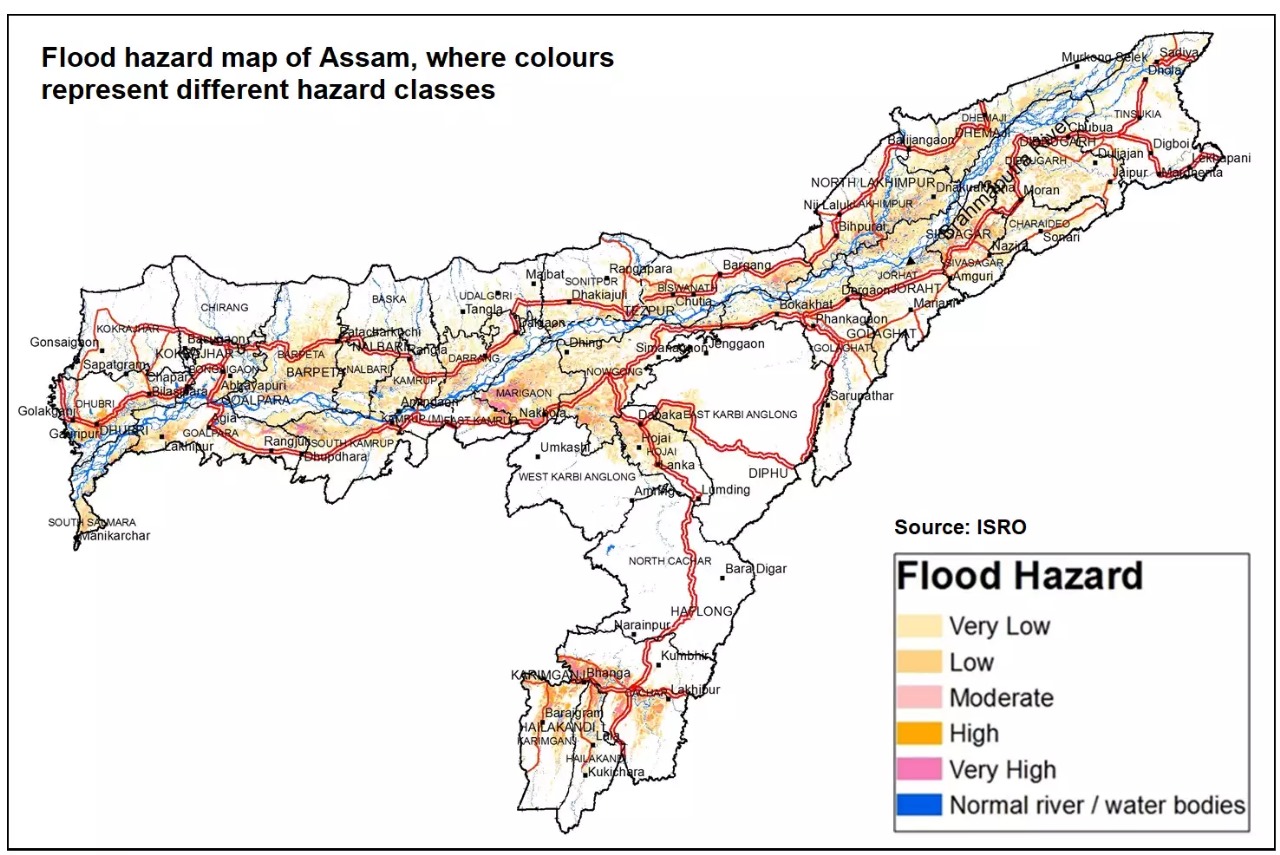Introduction:
Annual monsoon flooding plagues Assam, with approximately 40% of the state’s landmass being susceptible to floods.
Remarkably, Assam accounts for nearly 10% of the total flood-prone area in India.

Natural Causes:
- Assam boasts an extensive river network, notably the Brahmaputra, Barak River, and more than 50 tributaries.
Additionally, Assam receives river waters from neighboring states like Arunachal Pradesh and Meghalaya. - Bank erosion, primarily driven by the Brahmaputra River, significantly contributes to annual flooding as it widens the river and alters its course, making it the widest river in India.
- Frequent earthquakes and landslides in Assam and the northeastern region raise the riverbed, exacerbating flooding.
Anthropogenic Causes:
- Human activities exacerbate flooding, such as encroachments along riverbanks and wetlands, insufficient drainage systems, unregulated urban expansion, hillside deforestation, and haphazard dam construction.
- The construction of dams has also played a role in exacerbating flooding issues.
Remedies:
National Measures:
- The Brahmaputra Board proposed dam and reservoir construction in 1982 as a means to mitigate floods in Assam, with dams intended to regulate water flow.
- The establishment of an efficient flood forecasting system is crucial for timely alerts and preparedness.
International Measures:
- Collaboration with international organizations like the Coalition for Disaster Resilient Infrastructure (CDRI) can provide valuable expertise and resources.
Local Area Measures:
- Implementation of flood-plain zoning to categorize areas based on vulnerability and restrict activities like farming and construction in high-risk zones.
- River channelization initiatives, including siltation devices through programs like the Mahatma Gandhi National Rural Employment Guarantee Act (MGNREGA).
- The Water Resources Department of Assam has undertaken projects involving embankments, flood walls, river training, bank protection, anti-erosion measures, and town protection.
Conclusion:
Effective flood management in Assam necessitates a combination of structural and non-structural measures.
Coordination between various sectors and collaboration between the central and state governments are essential for managing catchment areas and reducing the impact of annual flooding in Assam.
